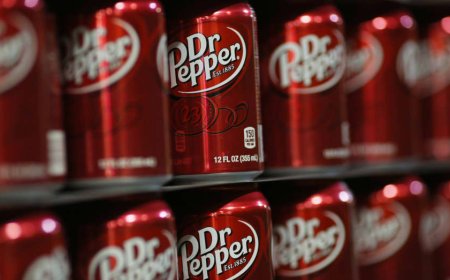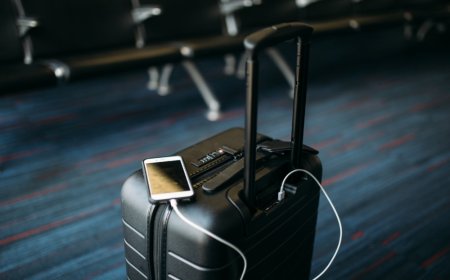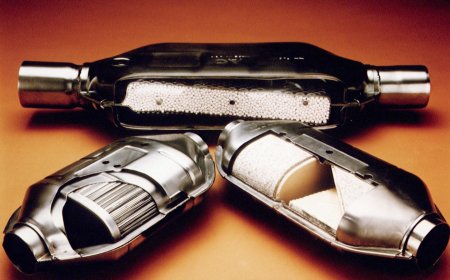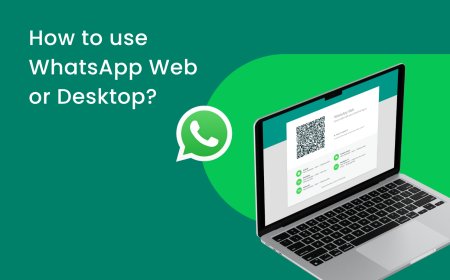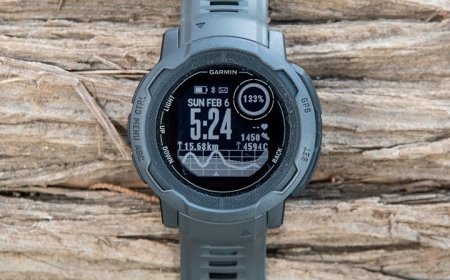How to Clear Facebook Cache?
Learn how to clear the cache and cookies on Facebook to speed up the site, fix login issues, and protect your privacy. Follow these simple steps for desktop, Android, iOS, Mac, and Windows.

How to Clear Facebook Cache?
Facebook is the most popular social networking site globally, with over 2 billion active users. With the increasing usage of Facebook, cache and cookies files start to pile up and affect the performance of the site. Clearing the Facebook cache is a simple process that can help to speed up the site, resolve login issues, and prevent privacy breaches. In this article, we will guide you through the process of clearing the Facebook cache and cookies on different devices.
What is Facebook Cache?
Facebook cache refers to the temporary files storage of web page data on Facebook's servers. When you or someone else shares a link on Facebook, Facebook's servers will scrape the linked web page for information such as the page title, description, and images. This information is then cached on Facebook's servers for a certain period of time.
When someone else shares the same link on Facebook, the cached information will be used to generate a preview of the link, rather than having to scrape the web page again. This can help improve the speed and efficiency of sharing links on Facebook.
However, sometimes the cached information can become outdated or incorrect, leading to issues such as incorrect preview images or outdated page titles. In such cases, you may need to clear Facebook's cache for that specific web page in order to update the cached information. It's a good technique to clear up internal storage on your phone without deleting apps.
Why Clear Facebook Cache?
While the Facebook cache can improve the app's performance, it can also cause issues such as slow loading times, freezing, and glitches. Clearing the cache can help fix these issues and free up space on your device. Additionally, if you're experiencing issues with your Facebook app after updating it, clearing the cache can help resolve those issues.
Is It OK to Clear Data on Facebook?
Facebook cache clearing is totally OK. It's actually advised that you perform this semi-regularly (once a month or so), as it will help keep your storage space somewhat open and preventing Facebook from slowing down.
Clearing the cache is frequently the solution for problems like posts that don't display correctly, updated profiles that don't seem to refresh, and more. This is due to the possibility that some saved data may have gotten corrupted for a variety of reasons, and deleting the corrupted files will make Facebook replace them.
All of your albums, lists, images, posts, and other content will not be removed or deleted from your Facebook profile as a result of clearing the cache.
Why Clear Facebook Cache and Cookies?
Before we dive into how to clear Facebook cache and cookies, let's understand why it is essential to clear them in the first place.
-
Improved Site Performance: Clearing the cache and cookies of the Facebook app or website can help to boost the site's speed and performance. It allows Facebook to load fresh data, which helps to reduce page loading time.
-
Fixing Login Issues: If you are facing login issues on Facebook, it may be due to corrupted cache or cookie files. Clearing them can resolve login issues and help you log in smoothly.
-
Protecting Your Privacy: Facebook caches and stores personal data like images, videos, and login credentials on your device, leaving them vulnerable to hackers. Clearing the cache and cookies can help to prevent privacy breaches and safeguard your personal information.
Now that we understand the importance of clearing the Facebook cache and cookies let's move on to the steps to do so.
How to Clear Facebook Cache on Desktop
-
Open your preferred web browser and go to the Facebook website.
-
Log in to your Facebook account if you haven't already.
-
Click on the three horizontal lines at the top right corner of the screen.
-
Scroll down and click on "Settings & Privacy" > "Settings."
-
Click on "Your Facebook Information" from the left sidebar.
-
Click on "Clear History" under the "History and Off-Facebook Activity" section.
-
Select the time range you want to clear and click on "Clear History."
How to Clear Facebook App Cache on Android Device
Clearing the Facebook cache on your Android device is a simple process. Here are the steps:
Step 1: Open Settings
Open the Settings app on your Android device. You can do this by tapping on the Settings icon in your app drawer or by swiping down from the top of your screen and tapping the gear icon.
Step 2: Select Apps
Scroll down and find the "Apps" option. Tap on it to open the Apps settings menu.
Step 3: Find Facebook and Tap on it
Scroll down until you find the Facebook app in the list of apps on your device. Tap on it to open the Facebook app settings.
Step 4: Clear Facebook Cache
Tap on the "Storage" option, which will open the storage settings for the Facebook app. Tap on the "Clear cache" button to clear the cache for the app.
Step 5: Clear Facebook Data (Optional)
If clearing the cache doesn't fix the issues you're experiencing with the Facebook app, you can also try clearing the data. Tap on the "Clear data" button to delete all of the app's data, including your login information and app settings. Note that clearing the data will log you out of the app and you'll need to log in again.
Other Tips to Improve Facebook Performance
Clearing the Facebook cache isn't the only way to improve the app's performance. Here are some additional tips:
- Update the Facebook app to the latest version.
- Uninstall and reinstall the Facebook app.
- Restart your Android device.
- Disable or uninstall other apps that may be conflicting with Facebook.
- Use the Lite version of Facebook, which uses less data and resources.
How to Clear Facebook App Cache on iPhone/iOS Device
Step 1: Open Facebook Settings
Open the Facebook app on your iPhone and tap on the three horizontal lines in the bottom-right corner of the screen. Scroll down and tap on "Settings & Privacy."
Step 2: Tap on "Storage"
In the "Settings & Privacy" menu, tap on "Settings." Scroll down and tap on "Storage."
Step 3: Clear Facebook Cache
In the "Storage" menu, tap on "Clear Cache" to clear the Facebook cache on your iPhone.
Other Tips to Improve Facebook Performance
Clearing the Facebook cache isn't the only way to improve the app's performance. Here are some additional tips:
-
- Update the Facebook app to the latest version.
- Uninstall and reinstall the Facebook app.
- Restart your iPhone.
- Disable or uninstall other apps that may be conflicting with Facebook.
- Use the Lite version of Facebook, which uses less data and resources.
- You can also go to the "Settings & Privacy" section of the Facebook app on your iPhone to clear the browser cache, and you can delete and reinstall the app to completely clean its stored browsing data.
Step-by-Step Guide to Clear Facebook Cache on Mac
Step 1: Open Facebook in Your Browser
Open your preferred web browser and navigate to Facebook.com.
Step 2: Open the Developer Tools
In your browser’s menu bar, click on “Develop” and then select “Show Web Inspector”. Alternatively, you can use the keyboard shortcut “Option+Command+I”.
Step 3: Clear the Cache
In the Web Inspector window, click on the “Network” tab. Then, click on the “Disable cache” checkbox. Finally, refresh the page by clicking on the “Reload” button or using the keyboard shortcut “Command+R”.
Step 4: Verify That the Cache Has Been Cleared
To verify that the cache has been cleared, go back to the “Network” tab in the Web Inspector window. You should see that the cache size has been reduced to zero.
Step 5: Close the Web Inspector
Once you have confirmed that the cache has been cleared, close the Web Inspector window.
Additional Tips for Clearing Facebook Cache on Mac
Here are a few additional tips to keep in mind when clearing your Facebook cache on Mac:
Tip 1: Clear Your Browser Cache
In addition to clearing your Facebook cache, you may also want to clear your browser cache. This can help speed up all websites you visit, not just Facebook.
Tip 2: Use a Third-Party Cache Cleaner
If you don’t want to clear your cache manually, you can use a third-party cache cleaner like CleanMyMac X. This software can help you clear your cache and other types of temporary files with just a few clicks.
Tip 3: Clear Your Browser Cookies
Clearing your browser cookies can also help speed up websites like Facebook. However, keep in mind that clearing your cookies will log you out of all websites you are currently logged into.
How to clear Facebook cache on Windows
There are two primary methods for clearing Facebook cache on Windows: through the web browser or through the Windows settings.
Clearing Facebook cache through the web browser
- Open your preferred web browser (e.g., Google Chrome, Mozilla Firefox, Microsoft Edge).
- Go to the Facebook website and log in to your account.
- Press CTRL + SHIFT + DELETE on your keyboard to open the clear browsing data window.
- Select the time range for which you want to clear the cache (e.g., last hour, last 24 hours, all time).
- Check the box next to "Cached images and files."
- Click on "Clear data."
Clearing Facebook cache through the Windows settings
- Click on the Windows start menu and select "Settings."
- Click on "Apps."
- Select "Facebook" from the list of installed apps.
- Click on "Advanced options."
- Click on "Reset."
- Click on "Reset" again to confirm.
How to prevent the accumulation of Facebook cache on Windows
You can prevent the accumulation of Facebook cache on your Windows device by adjusting the settings in your web browser or by using a third-party cache cleaning tool. Additionally, you can also limit the number of Facebook posts, photos, and videos you access on your Windows device.
Emptying Facebook’s Open Graph Cache
Users can add tags to their Facebook data using the Open Graph API, which instructs other websites what to display and say when the data is shared. This is crucial for SEO and growing your brand.
The information on the summary cards and the photos themselves may, however, not be displayed correctly when the cache for these tags is overfilled, which is a major issue. Users can utilize a Facebook link scraper and debugger to pinpoint problems.
Conclusion
It's really not that difficult to clear the cache on any device you own and use to access Facebook. And with the above-mentioned steps, you will be able to complete this task quickly and independently on an iPhone, an Android device, or even a computer.
Clearing the Facebook cache and cookies is an essential step to maintain the site's speed and performance and protect your privacy. We hope this article has guided you through the process of clearing the Facebook cache on different devices.
What's Your Reaction?









